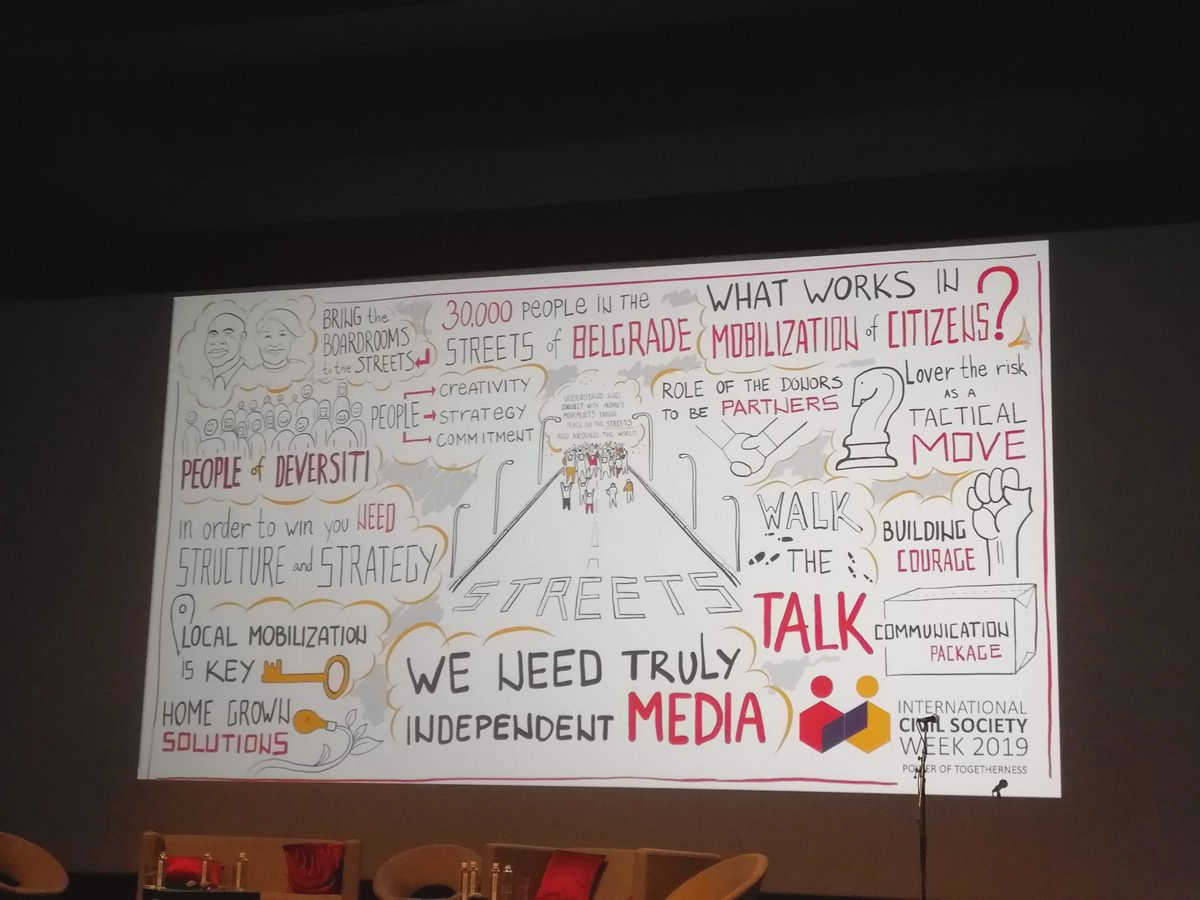Social justice has become a prominent movement in recent years, with local organizations and grassroots movements playing a crucial role in advocating for change. These civil society groups have emerged as powerful forces, driving policy reform and challenging the status quo.
At the local level, individuals and communities have come together to address the various forms of injustice that exist in their societies. From racial discrimination to gender inequality, these movements strive to create a more equitable and inclusive world. They organize protests, engage in community outreach, and work towards legislative changes that promote social justice.
What makes these local movements even more powerful is their ability to connect with each other and form global networks. In the age of social media and technology, information and ideas spread faster than ever before. As a result, these local movements are able to share strategies, inspire one another, and mobilize on a global scale.
The impact of civil society organizations can be seen in various areas, ranging from environmental activism to human rights advocacy. Through their collective efforts, these organizations have been able to shed light on pressing issues, push for legal reforms, and hold governments and corporations accountable for their actions.
In this article, we will explore the rise of civil society and the increasing importance of local movements in advocating for social justice. We will examine their strategies, successes, and the challenges they face in their quest for a more just and equal world.
Understanding Social Justice: An Overview
Social justice refers to the concept of creating a fair and equitable society in which all individuals have equal rights and opportunities, regardless of their race, gender, socioeconomic status, or other characteristics. It involves addressing systemic inequalities and working towards a more just and inclusive society.
One of the key principles of social justice is the idea of distributive justice, which focuses on the equitable distribution of resources, wealth, and opportunities. This means that everyone should have access to basic necessities such as food, shelter, healthcare, education, and employment.
Another important aspect of social justice is the recognition of individual and group rights. This includes ensuring that everyone has the right to freedom of expression, freedom of religion, and freedom from discrimination. It also involves promoting the rights of marginalized and oppressed groups, such as women, ethnic minorities, and the LGBTQ+ community.
Advocates for social justice often work towards creating systemic change by challenging social norms, policies, and institutions that perpetuate inequality and discrimination. They strive to raise awareness about social issues, advocate for policy reforms, and support grassroots movements that aim to address these issues.
Understanding social justice requires acknowledging the intersectionality of various forms of oppression. It recognizes that individuals can experience multiple forms of discrimination and that systems of power and privilege are interconnected. Therefore, efforts to achieve social justice must address a wide range of issues, such as gender inequality, racial discrimination, economic injustice, and environmental degradation.
In conclusion, social justice is an ongoing pursuit of creating a fair and inclusive society that respects the rights and dignities of all individuals. It involves challenging and transforming systems of inequality and advocating for policies and practices that promote justice and equality for all.
Historical Context: The Roots of Civil Society Movements
In order to understand the rise of civil society movements and their impact on social justice, it is important to examine their historical roots. These movements have a long history that can be traced back to various events and developments.
Enlightenment Era
One of the key influences on the rise of civil society movements was the Enlightenment era of the 18th century. During this time, philosophers and thinkers emphasized the importance of individual rights and freedoms, as well as the power of reason and rationality. These ideas laid the groundwork for the concept of civil society, which referred to the space outside of the state and the market where people could come together to pursue common goals and advocate for change.
Anti-Slavery Movement
The abolitionist movement in the 19th century also played a significant role in the development of civil society movements. Activists and organizations advocating for the end of slavery and the rights of enslaved people brought attention to the injustices and inequality present in society. Their efforts highlighted the power of collective action and grassroots organizing in bringing about social change.
Civil Rights Movement
The civil rights movement in the United States in the 20th century was another pivotal moment in the history of civil society movements. Led by prominent figures such as Martin Luther King Jr., this movement fought against racial segregation and discrimination. It mobilized masses of people and used nonviolent resistance strategies to challenge the status quo and demand equal rights and opportunities for all.
Overall, the roots of civil society movements can be found in the ideas of the Enlightenment era, the efforts of abolitionists, and the struggles of the civil rights movement. These historical events paved the way for modern civil society movements and continue to inspire activists and organizations fighting for social justice today.
Grassroots Activism: Local Movements that Sparked Change
Grassroots activism is a powerful force that has the ability to bring about significant social change. These local movements often start small, driven by passionate individuals who are dedicated to addressing a specific issue or injustice within their communities.
One example of grassroots activism is the Civil Rights Movement in the United States. It began in the 1950s and 1960s, with local organizations such as the Montgomery Improvement Association and the Student Nonviolent Coordinating Committee leading the way. These groups championed the rights of African Americans, organizing protests, sit-ins, and boycotts to combat racial segregation and inequality.
Another notable example is the Women’s Suffrage Movement, which fought for women’s right to vote. Local organizations like the National American Woman Suffrage Association and the Women’s Social and Political Union played a crucial role in organizing rallies, marches, and lobbying efforts to secure women’s suffrage.
Environmental activism is also often driven by grassroots movements. Local organizations and individuals concerned about issues such as deforestation, pollution, and climate change come together to raise awareness, advocate for policy change, and take action to protect the environment. One example is the movement against the construction of the Keystone XL pipeline, which saw local communities and environmental groups uniting to oppose the project.
What makes grassroots activism so powerful is its ability to connect individuals at the local level, facilitating collective action and creating a ripple effect that can lead to broader societal change. These movements often rely on community organizing, mobilizing volunteers, and utilizing social media platforms to amplify their messages and reach a wider audience. By starting at the local level, grassroots activism has the potential to grow and evolve into a global movement with significant impact.
Intersectionality: Recognizing the Overlapping Struggles for Justice
Intersectionality is a concept that recognizes how different forms of discrimination and oppression intersect and interact with each other. It highlights the overlapping struggles for justice faced by individuals who are marginalized based on multiple aspects of their identity, such as race, gender, sexual orientation, socioeconomic status, and disability.
By acknowledging intersectionality, we can understand that oppression is not experienced in isolation but rather as an interconnected web of power structures that disadvantage certain groups. For example, a woman of color may face unique forms of discrimination that cannot be fully understood through a singular lens of racism or sexism alone. Her experience is shaped by both her gender and her race, creating a complex dynamic that must be addressed for true social justice to be achieved.
Recognizing intersectionality is crucial in advocacy work because it allows us to develop more inclusive and comprehensive strategies for social change. By understanding how different forms of oppression intersect, we can better identify the root causes of inequality and work towards dismantling them. This requires a commitment to addressing the specific needs and challenges faced by individuals who exist at the intersections of multiple marginalized identities.
An intersectional approach also emphasizes the importance of centering the voices and experiences of those who are most affected by systemic injustices. It calls for active listening and collaboration with marginalized communities to ensure that their perspectives are valued and incorporated into decision-making processes. Only by actively involving those who are directly impacted by oppression can we develop effective solutions that promote equity and social justice for all.
In conclusion, intersectionality is a vital framework for understanding and addressing the overlapping struggles for justice faced by marginalized individuals. By recognizing the complex ways in which discrimination operates, we can develop more inclusive and effective strategies for social change. It is through this intersectional lens that we can strive towards a more equitable and just society for everyone.
Empowering Marginalized Voices: Amplifying Underrepresented Communities
Empowering marginalized voices is a crucial aspect of advocating for social justice. By amplifying the voices of underrepresented communities, we can help create a more inclusive and equitable society. It is important to recognize that marginalized groups, such as people of color, LGBTQ+ individuals, and persons with disabilities, have historically been silenced and ignored. By providing them with platforms to speak and be heard, we can challenge systemic barriers and promote social change.
Creating Safe Spaces for Expression
One way to empower marginalized voices is by creating safe spaces for expression. These spaces should be free from judgement and discrimination, allowing individuals to share their stories and experiences without fear of repercussions. Organizations and community groups can play a significant role in facilitating these spaces, hosting workshops, support groups, or open forums where individuals can come together and discuss the issues that affect their communities.

Providing Access to Resources
In order to amplify underrepresented communities, it is essential to provide them with access to resources that can support their causes and initiatives. This includes financial resources, educational materials, and technical support. By removing barriers and providing necessary resources, marginalized groups can more effectively advocate for their rights, challenge inequality, and promote social justice.
Supporting Grassroots Movements
Grassroots movements, organized by individuals within marginalized communities, have been instrumental in driving social change. By supporting these movements, we can help amplify underrepresented voices and empower communities to challenge systemic injustices. This support can take various forms, from volunteering and donating to actively participating in demonstrations and rallies. By standing in solidarity with grassroots movements, we can collectively advocate for a more just and inclusive society.
In conclusion, empowering marginalized voices is crucial in the fight for social justice. By creating safe spaces, providing access to resources, and supporting grassroots movements, we can amplify the voices of underrepresented communities and work towards a more equitable future.
Social Media and Activism: The Power of Digital Networks
Social media has revolutionized the way activism is conducted, providing a powerful platform for individuals and organizations to connect, mobilize, and advocate for social justice. With the rise of digital networks, activism has become more accessible, allowing individuals from all walks of life to participate in the conversation and contribute to meaningful change.
One of the most significant advantages of social media in activism is its ability to reach a global audience. Unlike traditional forms of activism that may be limited by geographic boundaries, digital networks have the power to transcend borders and connect individuals from different parts of the world. This allows for the rapid spread of information, ideas, and calls to action, amplifying the impact of social justice movements.
Social media also plays a crucial role in raising awareness and mobilizing support. Through platforms like Twitter, Facebook, and Instagram, activists can share powerful stories, images, and videos that capture the attention of millions of people. This ability to engage and inspire is especially important for marginalized communities whose voices may have been historically silenced. By utilizing the power of social media, activists can challenge dominant narratives and amplify the voices of those who have been traditionally unheard.
Furthermore, social media allows activists to build networks and coalitions, fostering collaborations and partnerships that strengthen the collective impact of social justice movements. Online platforms provide spaces for individuals and organizations to connect, share resources, and coordinate efforts. This collaboration extends beyond local and national boundaries, facilitating the creation of global movements united by a shared purpose.
In conclusion, social media has transformed the landscape of activism, providing a powerful tool for individuals and organizations to advocate for social justice. Through digital networks, activists can reach a global audience, raise awareness, mobilize support, and build networks of collaboration. As technology continues to evolve, it is crucial to harness the power of social media responsibly and ethically, recognizing its potential for both positive and negative impact.
Global Advocacy: From Local to International Impact
Advocacy efforts that begin at the local level have the potential to grow and make a profound impact on the international stage. Through collaborative efforts, grassroots movements can gain momentum and successfully advocate for social justice and human rights on a global scale.
One key aspect of global advocacy is the power of connectivity. In today’s digital age, social media and online platforms enable individuals and organizations to connect and share their causes with a global audience. This connectivity helps amplify local voices and causes, reaching people across borders and creating a larger impact.
International organizations and networks play a crucial role in supporting and amplifying local advocacy efforts. These organizations provide resources, funding, and guidance to local movements, helping them navigate the complexities of global advocacy. By joining forces with these global networks, local movements can tap into a vast pool of knowledge and support to expand their reach and effectiveness.
Effective global advocacy often requires a multi-level approach. Local movements can collaborate with regional and national organizations that share similar goals, pooling their resources and knowledge to create a stronger impact. This collaboration allows for the sharing of best practices and strategies, enabling advocates to learn from each other and adapt their approaches to different contexts.

Global advocacy also involves working with governments, international institutions, and policymakers to influence policies and bring about systemic change. By engaging with decision-makers at all levels, advocates can bring attention to social justice issues and push for legislative reforms that address the root causes of inequality and injustice.

In conclusion, global advocacy is a powerful tool that can transform local movements into international forces for change. Through connectivity, collaboration, and engagement with governments and institutions, local advocates can make a global impact and contribute to the advancement of social justice and human rights worldwide.
The Role of NGOs: Non-Governmental Organizations as Agents of Change
Non-governmental organizations (NGOs) play a crucial role in advocating for social justice and driving change at both local and global levels. These organizations are independent of government control and are driven by a shared mission to address social issues and promote positive change. NGOs operate in various sectors, including human rights, environmental protection, poverty alleviation, education, and healthcare.
One key role of NGOs is to raise awareness about social justice issues and advocate for the rights of marginalized communities. They often work on the ground, actively engaging with local communities to understand their needs and amplify their voices. Through grassroots initiatives, NGOs empower individuals and communities to fight for their rights and challenge systemic inequalities.
NGOs also serve as catalysts for change by mobilizing resources and building networks of like-minded individuals and organizations. They collaborate with governments, corporations, and other stakeholders to develop innovative solutions to social problems. By leveraging their expertise and influence, NGOs can influence policy-making processes and hold decision-makers accountable for their actions.
Furthermore, NGOs contribute to social justice efforts by providing direct services and support to affected individuals and communities. They deliver essential resources, such as food, shelter, education, and healthcare, to those in need. Additionally, NGOs often offer training and skills development programs that enable individuals to improve their socio-economic status and become self-sufficient.
In conclusion, NGOs play a crucial role as agents of change in advocating for social justice. Their independence and commitment to social issues enable them to effectively raise awareness, promote rights, mobilize resources, and provide direct support. By working collaboratively with different stakeholders, NGOs have the power to drive significant positive change and create a more just and equitable society.
Barrier-breaking Collaborations: Partnerships for Social Justice
In the pursuit of social justice, barrier-breaking collaborations and partnerships play a crucial role. By joining forces, diverse organizations and individuals can pool their resources, expertise, and influence to tackle complex social issues from a multi-dimensional perspective.
One type of partnership that has proven effective in promoting social justice is the collaboration between non-governmental organizations (NGOs) and local communities. NGOs often have the knowledge and experience to address social injustices, while communities have a deep understanding of the specific challenges they face. Together, they can create sustainable solutions that address the root causes of injustice and empower marginalized populations to become agents of change.
Another important partnership is the collaboration between civil society and government institutions. Civil society organizations, such as advocacy groups and grassroots movements, can bring attention to social injustices and advocate for policy changes. Government institutions, on the other hand, have the power to implement these changes and provide the necessary resources to address social inequalities. Through collaboration, civil society and government can work together to create lasting systemic change.
Partnerships for social justice can also extend beyond regional boundaries. International collaborations between organizations and activists from different countries allow for the exchange of ideas, best practices, and resources. This global solidarity strengthens social justice movements and amplifies their impact on a larger scale. Through cross-border alliances, advocates can address issues such as human rights violations, environmental justice, and economic inequality that transcend geographic boundaries.
Effective partnerships for social justice require open communication, mutual respect, and a shared vision. They involve recognizing and valuing the unique perspectives and expertise each partner brings to the table. By working together, these collaborations can overcome barriers and drive meaningful change towards a more just and equitable society.
The Future of Social Justice Advocacy: Challenges and Opportunities
Social justice advocacy faces both challenges and opportunities as the movement continues to evolve and grow. One of the main challenges is addressing the intersectionality of social justice issues. Advocates must recognize and address the interconnected nature of various forms of oppression, such as racism, sexism, and poverty. This requires a holistic approach that acknowledges the unique experiences and needs of marginalized communities.
Furthermore, social justice advocates must navigate the digital landscape and harness the power of technology for their cause. The rise of social media and online platforms has provided new avenues for advocacy, allowing individuals to mobilize and amplify their voices. However, this also presents challenges in terms of navigating misinformation, online harassment, and the spread of harmful ideologies.
Another challenge is ensuring that social justice advocacy remains inclusive and accessible to all. As the movement gains momentum, there is a risk of certain voices being marginalized or co-opted by mainstream narratives. Advocates must actively work to amplify marginalized voices, create spaces for dialogue, and ensure that diverse perspectives are represented in decision-making processes.
Despite these challenges, there are also numerous opportunities for social justice advocacy to make a meaningful impact in the future. Collaborative efforts between different organizations and movements can lead to greater collective power and influence. Building coalitions and networks can help maximize resources and amplify advocacy efforts.

Additionally, the increasing awareness of social justice issues and growing support from the general public provide opportunities for advocacy to effect systemic change. By raising public awareness, challenging existing power structures, and advocating for policy changes, social justice advocates can bring about lasting social transformation.
Education and awareness are also key in shaping the future of social justice advocacy. By promoting critical thinking, empathy, and cultural understanding, advocates can foster a more inclusive and equitable society. This includes advocating for comprehensive education on social justice issues within schools, universities, and other educational institutions.
In conclusion, the future of social justice advocacy is both complex and promising. By addressing challenges related to intersectionality, technology, inclusivity, and education, advocates can seize the opportunities for meaningful change and advance social justice on both local and global levels.





